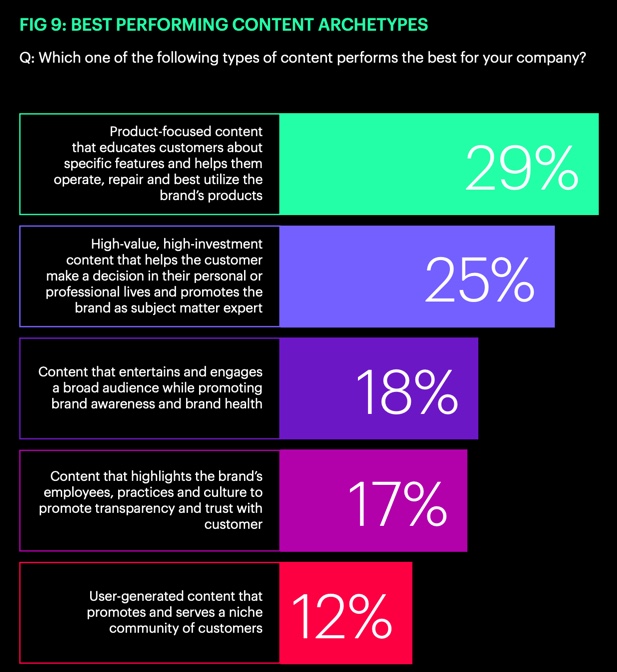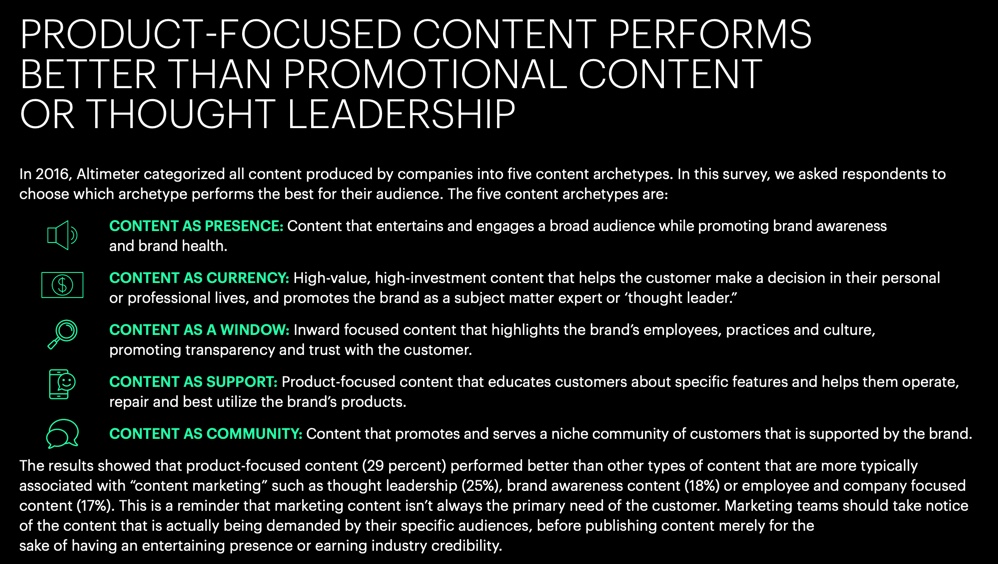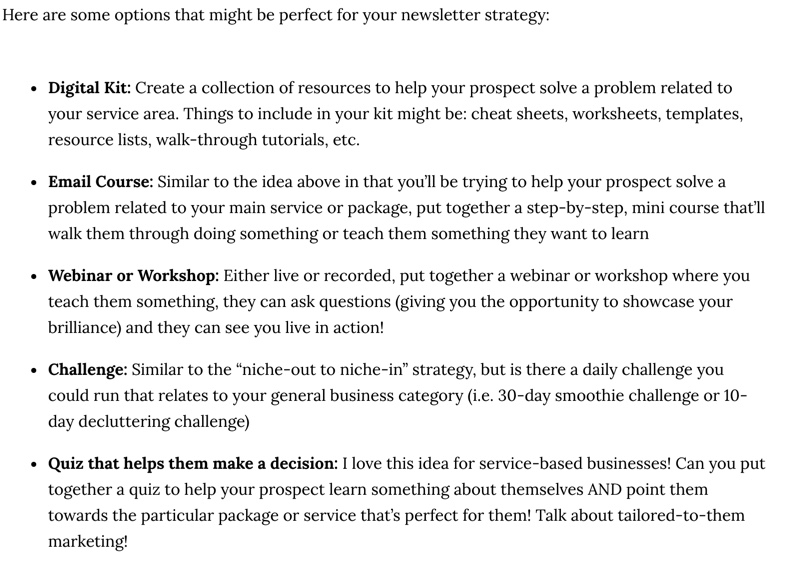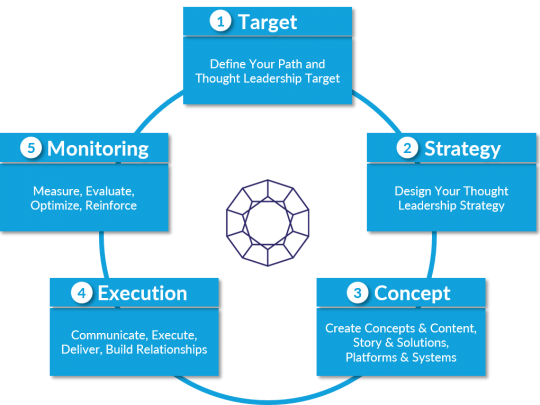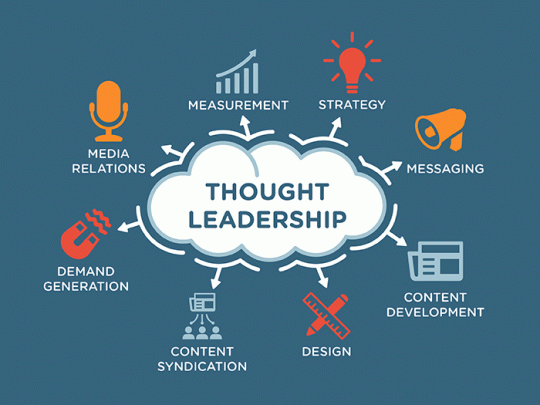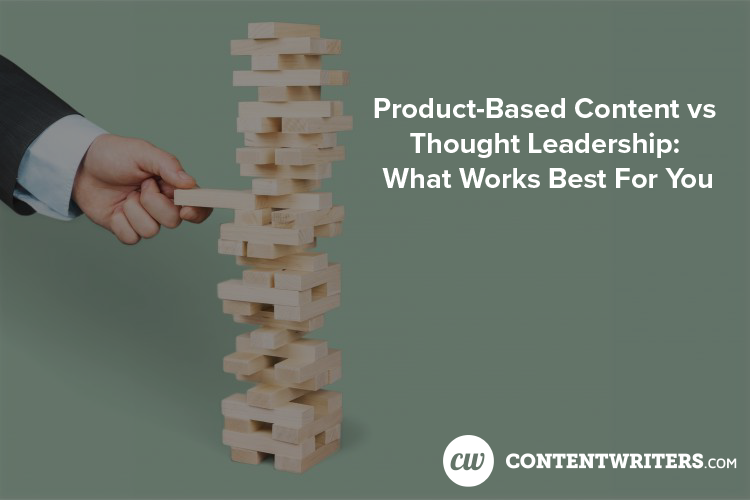
Product-Based Content vs Thought Leadership: What Works Best For You
Recent findings from Altimeter’s Digital Content Survey reveal an unexpected lead in customer preferences for product-based content. The findings are based on data gathered from 400 content and digital marketers around the globe. The objective was to gain insights into the strategies, channels, and types of content that perform the best in each locale and industry.
One of the most staggering findings is that 29% of the respondents say their product-focused content performs better than all other types of content— especially in Asia and Europe. Shockingly, this means it overtakes thought leadership, which follows at 25%.
According to Altimeter, product-focused content “educates customers about specific features and helps them operate, repair, and best utilize the brand’s products.” Thought leadership is defined as “high-value, high-investment content that helps the customer make a decision in their personal or professional lives and promotes the brand as a subject matter expert.”
When it seems like the focus in content marketing has long been on becoming industry experts through thought leadership, shifting the lens back to product-focused content is surprising. However, if we take a closer look, this trend is only true in specific cases. By examining the data, it becomes evident that the preference for product-based content only applies to certain industries.
One Size Does Not Fit All
As Altimeter examined their findings, they found that that the preference for product-based content only pertains to a couple of industry types. Retailers and manufacturers have a target audience that desires more product-focused content, while industries in technology, finance, and healthcare have audiences who crave more thought leadership.
From these findings, it is clear that when it comes to content, there is not a one-size-fits-all strategy. If your business is in a niche field like finance and technology, then offering new insights and perspectives on your industry is more likely to interest your target audience. If your industry is in retail or manufacturing, you may find more success in shifting your focus on creating content that explains your products’ usefulness and function.
Do you know what you have and where you stand? If not, then it’s time to perform a content audit and see what kind of information you’re currently offering customers. How is your audience engaging with your posts, blogs, and emails? Do they have any feedback for you? What do they want to know about?
This is a great time for your team to evaluate what type of business you are and what you want to be. Define your target audience and objectives to create a content strategy that benefits you.
Product-Based Strategy
For industries who identify a need for product-based content, it’s important to understand that even within your industry, the type of content you need in terms of format, presentation, and digital location will be specific to your unique needs.
Your mission is to inform and connect with your audience in a way that is relevant to them. Overall, the core of a good product-based strategy is to know your product and how it can help solve your buyer’s problem. Here are a few tips to keep in mind when formulating a product-based strategy.
- Establish a vision: No strategy can go far without a roadmap. Do you have a well-defined value proposition that can explain what your product is and what it does so that a total stranger can understand? Who are you solving the problem for? Why was this product made? How does it innovate or exceed competitor performance?
- Define your audience: Know who you are marketing to in order to set up your strategy’s goals. What do they want to know? For industries like retailers and manufacturers, put yourself in your customer’s shoes. They have a problem and your product solves it. They also need to be cared for after purchasing your product. Do you have helpful how-tos, diagrams, manuals, operational videos, and other supportive content that make your customer’s experience more enjoyable?
- Decide what type of content: Decide what content you’re going to need and its function and purpose. What do you want your content to achieve? How can it reinforce your value proposition? Also, does your website have a good UX that motivates people to purchase and makes the checkout process easy?
Good product-focused content answers a person’s question about your product to satisfaction. They can be exploring your product as a potential customer or looking for a “how to assemble” manual for your product after purchase. Therefore, your content should span various stages of the buyer’s journey so that you’re appealing to people in every stage of the retail process. Here are a couple more tips on developing this strategy.
- For products, leaving links to operational manuals on your website can be a great help to existing customers and doesn’t require much effort to maintain.
- Use emails, blogs, texts, and other content to introduce new products and embellish on the usefulness of your current products. Integrating your unique selling proposition (USP) will also set your product apart from competitors.
Thought Leadership Strategy
There has been such a buzz around thought leadership in recent years for its obvious benefits. For those in tech, finance, and healthcare, this content can establish you as a trustworthy authority in your industry. Great content can help you gain influence by approaching your industry’s problems with solutions and insights that are more comprehensive than what your competitors can offer.
The key difference behind thought leadership content vs. other kinds is its ability to create change in your industry. This content can be in the form of case studies, surveys, white papers, or a video series. But no matter the form, they present new information or insights that steer your industry into a new direction. Naturally, this takes more planning and organization compared to product-based content.
- Define your purpose: Instead of solving a buyer persona’s problem with a linear answer, thought-leadership presents a different way of understanding a broad issue in your industry. Examples of thought leadership include:
- Debunking common assumptions about your industry
- Predictions about your industry’s future
- Fresh perspectives on relevant topics related to your niche
It should be engaging and highly relevant so that it grabs the attention of your audience. Creating thought leadership content requires a lot of work — an organized team of researchers, writers, and other creatives who can make the content both visually and intellectually appealing.
The format is essentially the same as other types of content, but the knowledge contribution you make is what separates it from content that you can produce more quickly to keep your blog updated. Becoming a leader in your industry takes effort and the consistent production of high-quality content. However, it doesn’t always have to be a ground-breaking study that took a year to conduct.
Producing high-quality content that your audience seeks is also going to benefit your organization. Aside from the SEO benefits, you are establishing yourself as a brand that can be trusted in your industry while also generating a definitive digital footprint in your niche.
Your thought leadership team can include but isn’t limited to:
- Team Leader/ Project Manager: When a group of creatives gets together, it’s important to have someone on top to keep everyone on the same page. Project managers (or team leaders) have the vital task to keep individuals focused on the same goal and to stay on schedule.
- Researchers: The core of good content is reliable information from authoritative sources. Whether you’re conducting a new survey or need people to dig deeper to find exclusive insights, a researcher would be a good addition to your team. If you’re short on staff, there are also third-party researchers available for hire.
- Writer: After you make a content plan, your writer does a great deal of the fundamental creation. Whether it’s compiling and synthesizing data into a case study, writing video scripts, or completing a series of blogs — powerful, well-written words are necessary to get your thoughts across correctly.
- Editor: Even great writers need some help to perfect their work. Editors look at the content with fresh eyes and a new perspective.
- Graphic Designer: Do you need infographics, images, or just someone to make your content look good? This is the pro you need to make your ideas come alive.
- Analyst: To track the progress of your content, it’s good to have someone who knows how to assess your current situation and track how well your content performs. The data you receive from your analyst can help you make changes to your strategy for the better.
- Promoter: When you launch the content that you spent so much time and money to produce, make it known! Designate an expert to promote it to the right channels.
Work with your team to find out what type of content is working for you. Check out the clicks, shares, reactions, and comments, and see what content is propelling your business forward.
Thought leadership content requires expert delivery, timing, good design, good management on social media, and good writing to make it work.
Alicia is a professional content writer who specializes in the field of real estate and home living. Alicia is particularly knowledgeable in the area of marketing and promotion, having posted many listings online herself while also managing leads through CRMs. She has recently become HubSpot Inbound Marketing certified (valid until June 2019) and HubSpot Content Marketing certified (valid until July 2019).
